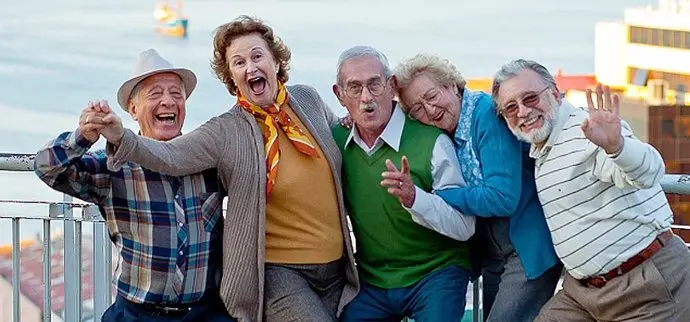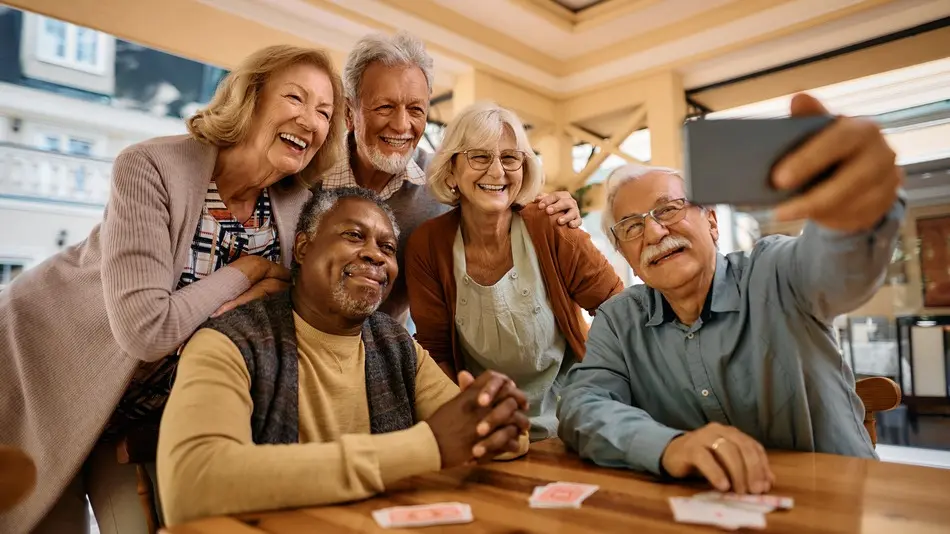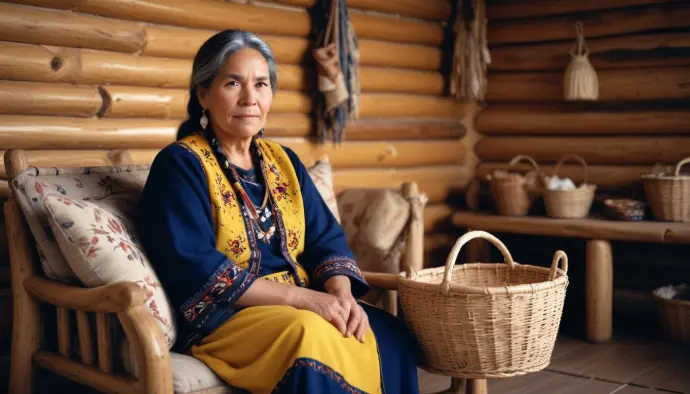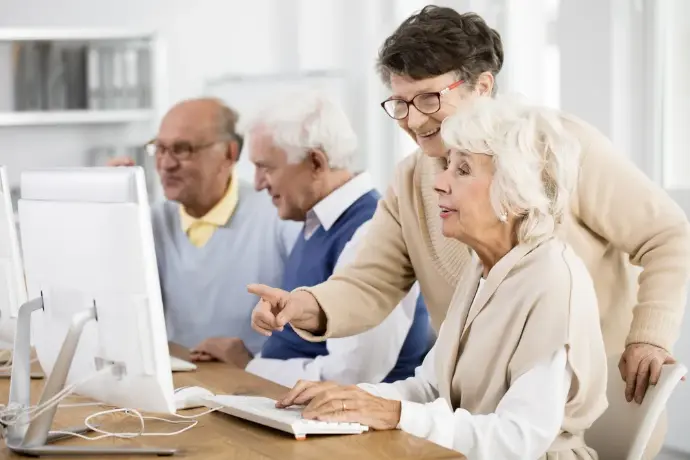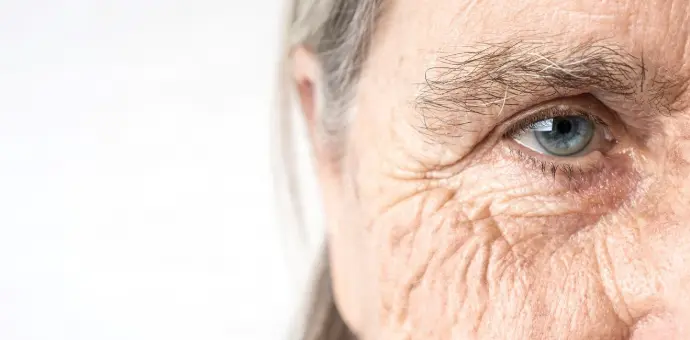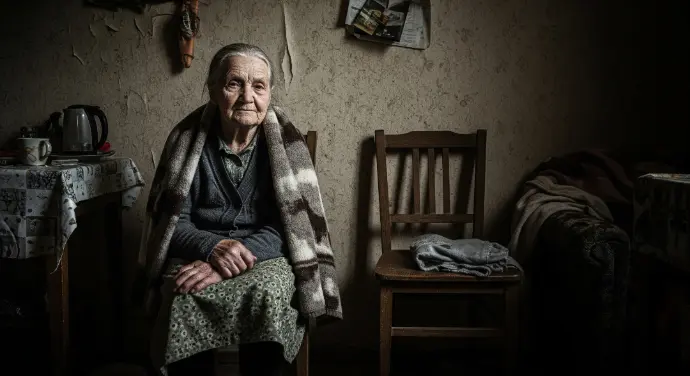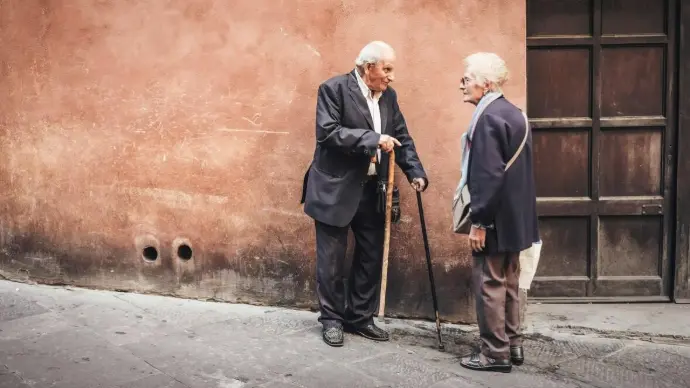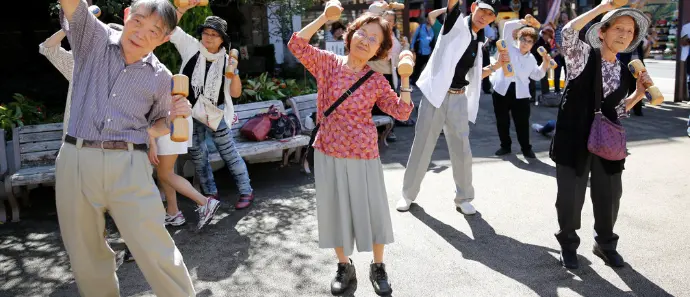In recent years, there have been significant efforts to promote international reflection and action on the human rights of older persons. Many stakeholders have called for increased visibility and use of international human rights standards to address the plight of millions of older men and women around the world.
Not long ago, the problem of ageing was thought to concern only a handful of countries. Today, the number of people over the age of 60 is increasing at an unprecedented rate, pointing to growth from the current 740 million to 1 billion by the end of the decade. Unfortunately, this increase has also highlighted the lack of adequate protection mechanisms and gaps in policies and programmes addressing the situation of older persons. Today, two-thirds of the world's older people live in low- and middle-income countries, and this proportion is set to rise to 80 per cent by 2050.
Older people are not a homogeneous group and the challenges they face in protecting or enjoying their human rights vary considerably. While some remain active members of their community, many others lack housing, adequate care or live alone.
Multiple discrimination figures as an essential component of any analysis, especially when one takes into account that discrimination on the basis of age is often combined with other discriminatory factors, such as sex, socioeconomic status, ethnicity or health status.
CHALLENGES
■ Discrimination: In different countries around the world, stereotypes and prejudices about older people are socially tolerated. Age discrimination tends to be combined with other discrimination, such as discrimination based on sex, race or ethnicity, religion, disability, socio-economic conditions or health status, which negatively impacts the exercise and enjoyment of human rights by older adults.
■ Poverty: The most pressing problem faced by older people is poverty, characterized by lack of adequate housing, malnutrition, lack of medical care for chronic diseases, limited access to drinking water and sanitation, prohibitive cost of medicines or medical treatment and insecurity of economic income. Despite their poverty, older people continue to be providers for their grandchildren and other family members.
■ Violence and abuse: Physical, emotional and/or sexual violence is reported worldwide, whether by family members or trusted persons. In addition, economic exploitation is not uncommon and is often under-documented and under-reported.
■ Lack of specific services and measures: Faced with the growing demand for specialized services, the supply remains insufficient. Older people require care and attention centers, long-term care programs, including in their own homes, as well as geriatric or other services that allow the exercise of a wide range of human rights.
The UN establishes that a person is considered to be an elderly person at 60 years of age, although in developed countries old age is considered to begin at 65 years of age.

Equality and non-discrimination based on age

Life and dignity in old age

Independence and autonomy

Community participation and integration
 Security and a life free from any kind of violence
Security and a life free from any kind of violence

Not to be subjected to torture or cruel, inhuman or degrading treatment or punishment

Provide free and informed consent in the health field

Personal freedom

Freedom of expression and opinion and access to information

Nationality and freedom of movement

Privacy and intimacy

Social security

Work

Health

Education

The culture

Recreation, leisure and sport
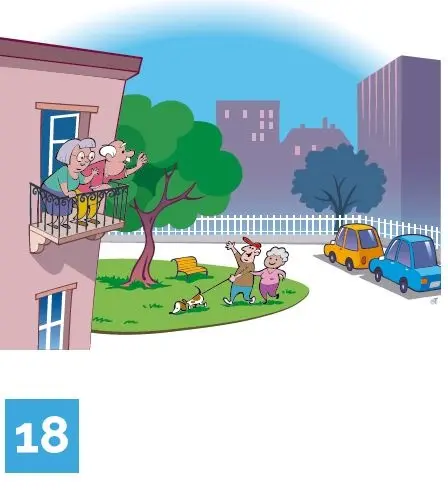
The housing

The property

A healthy environment

Accessibility and personal mobility

Exercise your political rights

Equal recognition as a person before the law

Access to justice

Of meeting and association
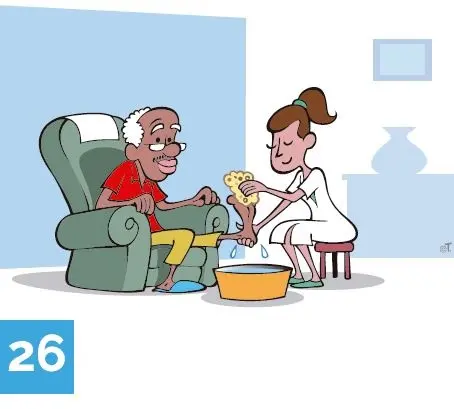
Who receive long-term care services

In situations of risk and humanitarian emergencies
Did you know...?
By 2050, one in six people is expected to be aged 65 or older, making older people even more vulnerable to violence.
Approximately 1 in 6 people aged 60 or older experienced some form of abuse in community settings.
Elder abuse can lead to serious physical injuries and long-lasting psychological consequences.
The problem is expected to increase due to ageing populations in many countries.
82% of estimated deaths from the COVID-19 pandemic worldwide occurred among people aged 60 or older.
Protecting our Elders
Between 2019 and 2030, the number of people aged 60 years and over is projected to increase by 38%, from 1 billion to 1.4 billion, outnumbering youth globally, and this growth will be especially greater and faster in developing regions, and requires greater attention to the specific challenges affecting older persons, including in the field of human rights.
Elder abuse is a social problem that exists in developing and developed countries and is generally underreported worldwide. Prevalence rates or estimates are available in only a few developed countries, ranging from 1% to 10%. Although the extent of elder abuse is unknown, its social and moral significance is indisputable. For this reason, this problem requires a multifaceted global response that focuses on protecting the rights of older persons.
Ways to define, detect and address elder abuse need to be framed in the cultural context and considered alongside culturally specific risk factors. For example, in some traditional societies older widows are forced to remarry, while in others older women living alone are accused of practising witchcraft. From a health and social perspective, if primary health care sectors and social services are not well equipped to detect and address the problem, elder abuse will remain semi-hidden.
Ageing
The world's population is ageing. Virtually all countries in the world are experiencing an increase in the number and proportion of older people.
Population ageing is poised to become one of the most significant social transformations of the 21st century, with implications for almost all sectors of society, including the labour and financial markets, the demand for goods and services such as housing, transport and social protection, as well as family structure and intergenerational ties.
Older people are increasingly seen as agents contributing to development, whose capacity to act in their own interest and that of their societies must be integrated into policies and programmes at all levels. In the coming decades, many countries are likely to face fiscal and political pressures in relation to public health care, pension and social protection systems for an increasingly older population.
According to the World Population Prospects 2022, the population aged 65 years and older is growing faster than the population under that age.
The proportion of people aged 65 years and older is increasing at a faster rate than that of those under that age. This means that the percentage of the world's population aged 65 years and older is projected to increase from 10% (2022) to 16% in 2050. It is estimated that in 2050 the number of people aged 65 years and older worldwide will be twice the number of children under 5 years of age and almost equivalent to the number of children under 12 years of age.
International migration plays a key role in shaping demographic trends in several countries around the world. In high-income countries, the contribution of international migration to population growth between 2000 and 2020 was greater than the ratio of births to deaths. Migration is thus projected to be the main driver of population growth in high-income countries for the foreseeable future. However, in low- and lower-middle-income countries, population growth is projected to continue to be driven by an excess of births over deaths.
Between 2010 and 2021, 40 countries or territories experienced a net inflow of more than 200,000 migrants each, and 17 of them had a net inflow of more than one million people. Countries with high levels of immigration during this period included Jordan, Lebanon and Türkiye, mainly due to refugee movements, mostly from the Syrian Arab Republic. On the other hand, for ten countries, the estimated net outflow of migrants exceeded 1 million during the same period, due to temporary labour movements in some countries, while insecurity and conflict drove migrant outflows in other regions.
The COVID-19 pandemic has impacted all aspects of demographic change, including fertility, mortality and migration. In 2021, global life expectancy at birth fell to 71 years from 72.8 in 2019, mainly due to the effects of the pandemic.
In Central and South Asia, and in Latin America and the Caribbean, life expectancy at birth fell by almost three years between 2019 and 2021. In some countries, the pandemic has led to a significant reduction in life expectancy at birth. For Bolivia, Botswana, Lebanon, Mexico, Oman and the Russian Federation, life expectancy at birth estimates decreased by more than four years between 2019 and 2021.
Although available data on the impact of the COVID-19 pandemic on fertility levels remain disparate, the availability and demand for contraceptives, as well as reported numbers of unintended pregnancies and births, have remained relatively stable in low- and middle-income countries. In high-income countries, successive waves of the pandemic may have caused short-term fluctuations in the number of pregnancies and births.
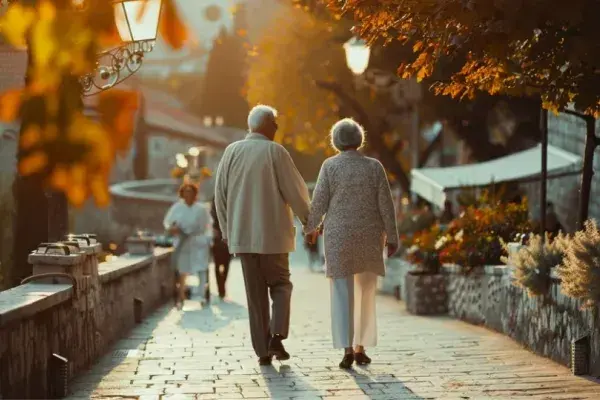
Every year, on August 28, Argentina celebrates AGING DAY
- Do you know what the scariest thing about aging is?
- What?
- You become invisible. When you are young, you are someone, you are beautiful, ugly, strong, attractive, scary, sexy... with age, all this passes. You become another old man in a worn jacket. You become invisible. Transparent...
Unfortunately, this is true. The only individual feature for grandparents is age.
Note that they do not say about old people: he is an engineer, or she is an accountant. They say: he is 76, and she is already almost 80... After reaching a certain age, the number of people who can know an elderly person, know who he was, what he can do, what he loves, how he lives, sharply decreases. His friends, colleagues, either died or became almost immobile. They leave the house only to go to the nearest store and stop crossing paths with each other.
The children have gone to live in a separate house and now they only love their "grandparents" by phone. The old people's home is inexorably surrounded by new neighbors. And there are no familiar salespeople left in the store.
The new neighbors only know the house/apartment number and age of the elderly. Two numbers. Who cares about numbers?! At best, they will help you carry your bag and put it by the door. And what happens behind the door, who needs it...
The elderly are a nameless world.
We often do not understand what a vacuum gradually surrounds our aging moms and dads. We do not understand why mom calls us at work 5 times a day and really bothers us. Why dad demands a report on things that do not concern him at all...
The elderly just want there to be someone who recognizes them by voice. So they call, afraid of losing this thread. They are in a hurry to take advantage of it before it breaks...
The date for this holiday in our country was not chosen by chance. On this day, August 28, 1948, Evita submitted a declaration of the rights of the elderly to the President of the country Juan Domingo Peron with a request to include the rights in the country's legislation.
The main points of the declaration:
a) The right to assistance. Every elderly person has the right to full protection by his family. In the event of being left without assistance from his family, the state is obliged to provide assistance and protection either directly or through established institutions or funds.
b) The right to housing. Every elderly person has the right to clean housing with the minimum necessary home comfort.
c) The right to food. Every elderly person has the right to healthy and adequate food in accordance with age and physical condition.
d) The right to clothing. Every elderly person has the right to decent and weather-appropriate clothing.
e) The right to medical care. Medical care for the elderly should be special and constant.
f) The right to care for moral health. Free access must be ensured for the realization of spiritual growth in accordance with morality and faith.
g) The right to leisure. Older people must have the right to a minimum of pleasure from entertainment so that they can cope with their lives with satisfaction.
h) The right to work. When the state and conditions allow, it is necessary to facilitate occupations through productive work therapy. This will prevent the degradation of the personality.
i) The right to peace. The enjoyment of peace, free from worries and cares in the last years of existence, is the property of older people.
j) The right to respect. Every older person has the right to be respected by others.
Of course, Juan Peron accepted the declaration - the rights were included in the Constitution of the Argentine Republic of 1948 in Article 37 III.
A little later, it was Argentina, a pioneering country, that brought the initiative of caring for the elderly to the UN.
The International Declaration was adopted at the 3rd session of the Committee of the General Assembly of the United Nations on November 18, 1949 and was subsequently reflected in the constitutions of countries around the world. International Day of Older Persons is celebrated worldwide on October 1. This date was established by the UN General Assembly in 1990. Argentina celebrates this day on August 28.

 IHRO NEWS
IHRO NEWS